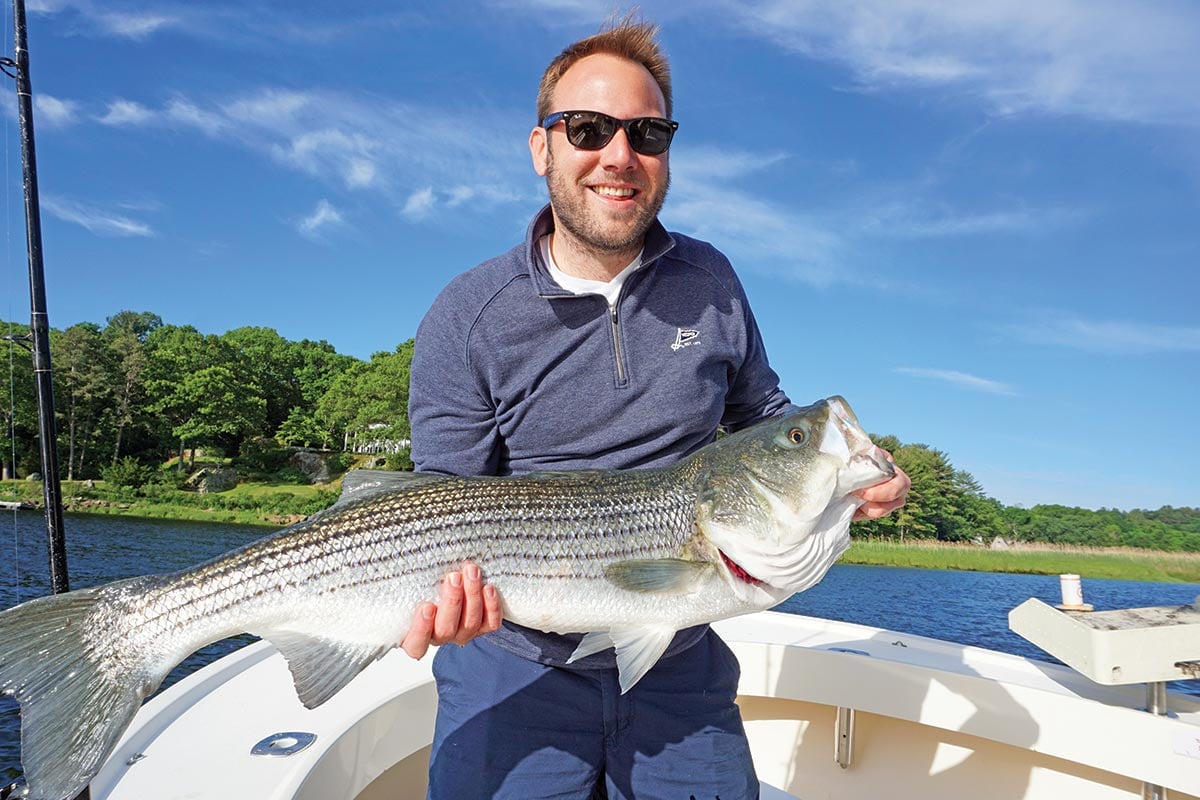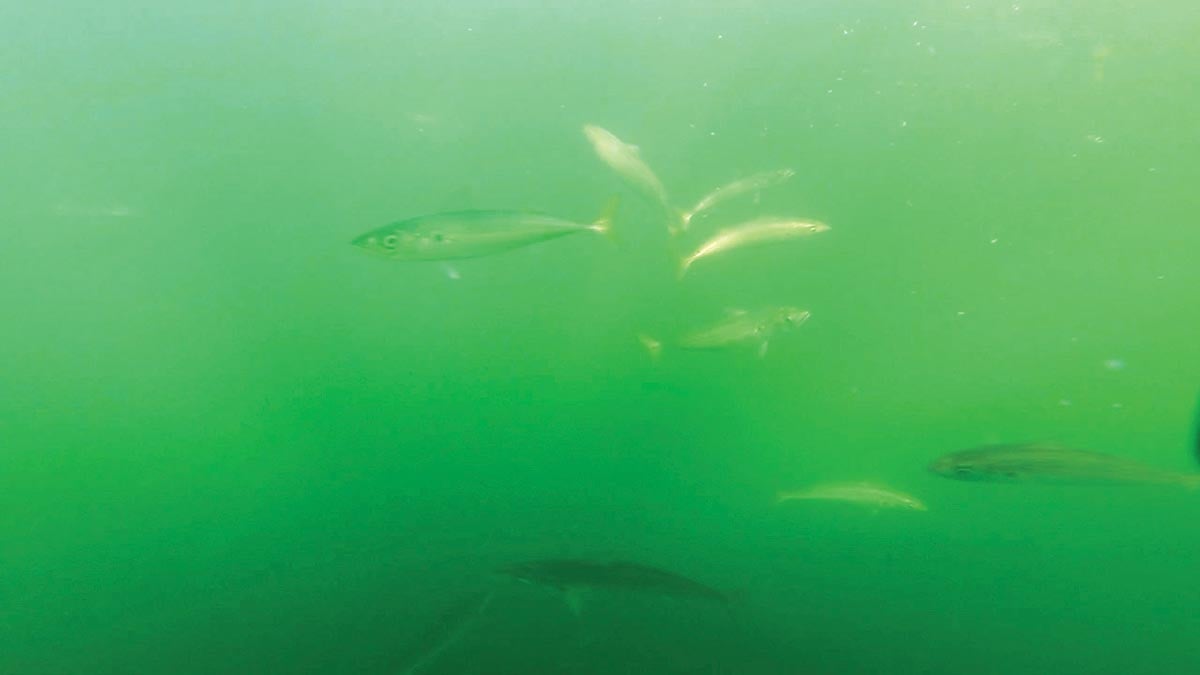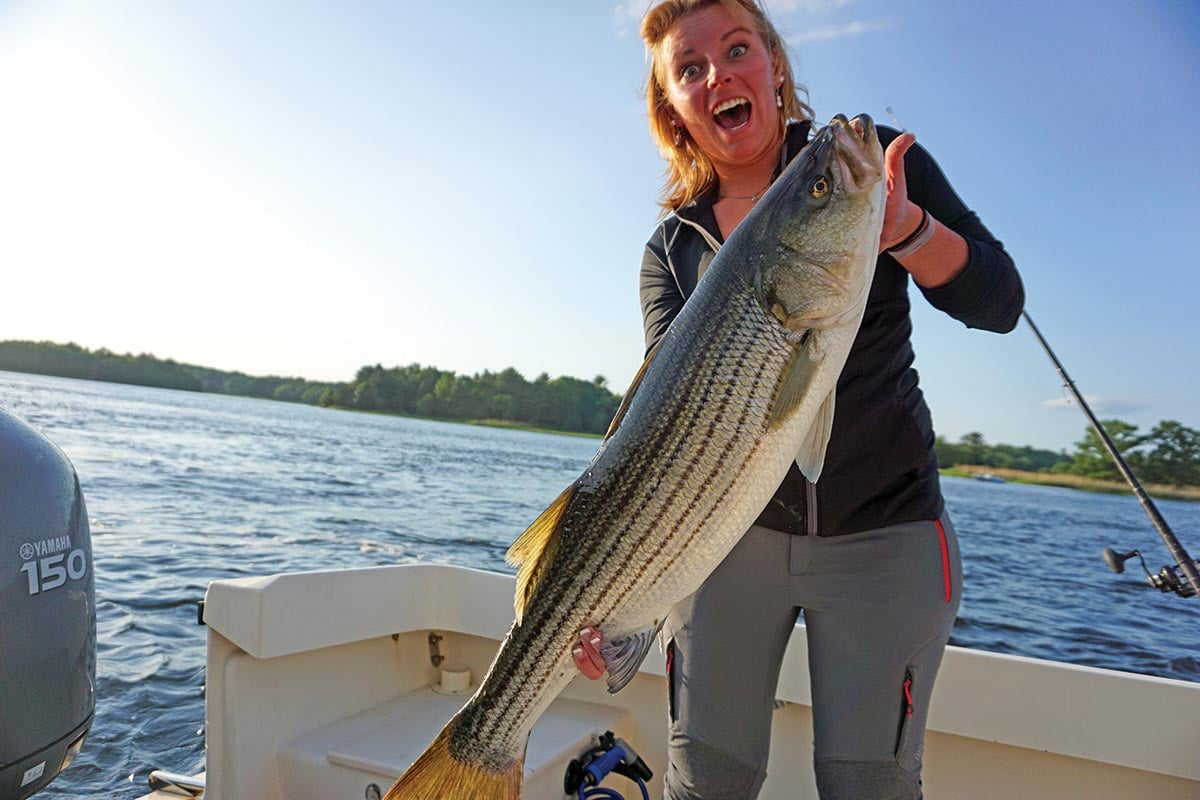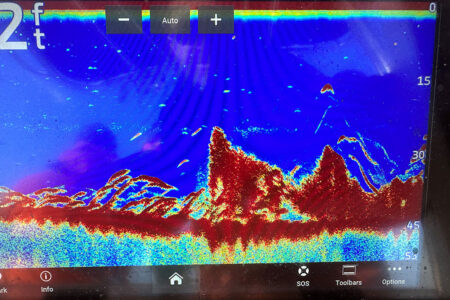
An early June sunrise just peeks over the horizon, filling the harbors of the Merrimack River and its surroundings in a captivating scene of calmness and anticipation. As I re-check and re-rig my rods for today’s adventure, I start my game plan thinking about the most important part of my trip: finding live mackerel. It is no coincidence that the better striper men fishing out of northern Massachusetts are also especially adept bait fishermen. Although there are plenty of opportunities for plugging, live bait is by far the most consistent way to catch a cow.
During the early part of our fishery on the north shore of Massachusetts, live mackerel is our primary choice for live bait. Not only do they provide stripers with authentic cuisine, but they also allow for a diverse array of presentations to help you land the fish of a lifetime.
Getting Bait
Mackerel are fast and can cover a lot of ground from one day to the next. Underwater humps, points, drop-offs, or rock piles are where I start hunting. A successful bait fisherman knows to target these specific areas, but a great one will keep his eyes open on the way to the grounds looking for visual signs along the way. It’s easy to punch in some numbers and head to them come hell or high water, but so many times I see people overshoot some really good fishing grounds because they weren’t reading the book Mother Nature was writing.
Tidelines, especially along structure, are some of my favorite places to fish for bait. The mixing of water density and temperature create pockets of disorientation for smaller baitfish that the mackerel feed on, sometimes up to four miles off the beach. You can spot a tideline by seeing a grease slick surrounded by choppier waves. Mackerel tend to congregate on either side of the rip and once you figure out which side, try to stay on that side of it. Weedlines and birds are also good indicators of life in the area.
As I throttle down up-wind of the structure, I wait to gauge drift direction so I can position my boat in a way that will keep us in the prime spots for the longest amount of time. Then I tie a mesh bag with a half-gallon of frozen chum (either herring or mackerel) over the side and tie it up to a cleat. My clients then deploy custom-made mackerel rods and reels loaded with 15-pound test, a bead, a Sabiki rig usually with size 8 hooks, and a 2-ounce jig on the bottom. To avoid tangles, I cut two Sabiki rigs in half and fish the other two as full stringers. I use fiberglass rods for the softness to not pull hooks when we have a full string of mackerel and for the toughness to lift up to six mackerel over the rail. The key is to keep a steady chum flow running and to keep the lines as vertical as possible. If the drift is too fast and your lines are a steep angle, anchoring is your best resort. This is made a lot easier since I installed a Minn Kota Ulterra on my boats where I can utilize Spot Lock quickly and accurately to avoid the hassle of throwing the anchor.

To really put the hammer down when you get on the school, you need to have some teamwork and rhythm. The first person to hook up should slowly reel to the boat while maintaining a tight line to avoid tangles. This accomplishes two things. The first is to have more mackerel jump on the remaining hooks. Second, it lures the rest of the school up to the boat scrambling to find a meal. Once you see the school, lift your rig into the boat where your buddy simultaneously drops his rig down to hook the scraps. While unloading the baits into the livewell, the other angler holds his mackerel just under the surface to keep the school up until angler one is ready to drop back down. You can repeat this cycle without having a cluster on the deck and establish a flow where one person always has a line in the water holding the school and the other has space to unhook his bait.
Before we even start striper fishing, I want a minimum of a dozen baits per angler on the boat, but we always try to “black out” the tanks. For this season, I have a new custom built 24-foot Sea Ox that is equipped with a 40-gallon round leaning post livewell with a light blue interior, a 1100 gph pump, and is pressure sealed to the top. I also have a secondary 27-gallon livewell on the transom that is oval shaped. Having two livewells allows my bait to not be too crowded and be happy little fish until I send them back down to awaiting jumbo bass.
Versatility in Techniques
Fishing live bait gives you options no matter the conditions. Mackerel can be drifted with or without weight, slow trolled in the shallows or in the super deep, pitched into rock piles, free-lined on structure, ballooned, chunked or stripped, or fished freshly dead. No matter what the time of year, day, tide, wind, temperature, or moon phase you can always find a way to catch a striper with a fresh piece of bait.
My general set up is a small conventional reel (Okuma Metaloid 5). Spinning reels with a live liner feature are popular, but I like the versatility of a conventional set up when it comes to trolling. Spool-up with either 40-pound braid or 20-pound mono. For rods, I use custom-made acid-wrapped Rainshadow SWS70M blanks with a 13-inch rear grip. I like the slow action of these blanks, the feather light weight, and the comfort of the longer grip to tuck under my arm.
I base all my live bait fishing off of a simple rig with a 2-ounce egg sinker stopped by a leader consisting of a 130-pound Spro power swivel, 3 feet of 40-pound fluorocarbon, and an 8/0 Mustad perfect inline circle hook. We start with this rig but will make adjustments in regard to weight, fluorocarbon, and different size hooks. For most situations, the original set up does the job.
With so many options to fish mackerel, I like to think of generalizations for each application. For strong currents and long structures like channel edges or flats, I prefer to drift. In areas deeper than 10 feet I use a weight to keep my presentation on the bottom.

Drop the bait to the bottom and keep the reel disengaged in free-spool with your thumb lightly on the reel and the rod pointed low. When you get a hit, keep the rod tip low and pointed at the fish until you feel the striper take a hard run, slide the lever up to strike, and reel slowly until the rod bends tight and you are hooked up! Don’t overlook fresh dead mackerel as an excellent change-up when drifting, too. Quite often the biggest fish of the day is duped by drifting a dead mack.
When targeting specific structure, like a rock pile or ledge, a huge advantage has been utilizing the Spot Lock feature on my aforementioned Minn Kota Ulterra. Since I put it on my boat, it has been the single biggest game changer to my fishing style. You just pull up-current of a spot, press a button, and BOOM! With the GPS-controlled motor, you stay right in the strike zone. I can pitch bait off my transom much like guides in the Florida Keys have been doing with tarpon for years. The best part is you can “Spot Hop” on different structure quickly and easily to pattern out striper behavior.
Outside of the river, where there is less current and structure, I troll mackerel off the beaches. I use the same rig I use to drift except I start with different weights until the fish tell me what they want, and troll as slowly as possible preferably under 2 knots. The trolling motor gives me the speed I need as well as the control when in Auto Pilot mode. Because the motor is pulling from my bow as opposed to my outboard pushing from the stern, the boat tracks straight and is not affected by wind or tide. I can fish more lines than I normally could, plus it’s a lot safer when fishing in the rollers off the beach.
The best part about all these techniques is they also apply to fishing with pogies, which we have had an abundance of the past two seasons! So get the idea out of your head that live bait fishing might not be sporty or technical because it certainly is. It’s fun, productive, and versatile. By varying our “spots” and our techniques, using mackerel keeps us consistently catching keepers all season long.



